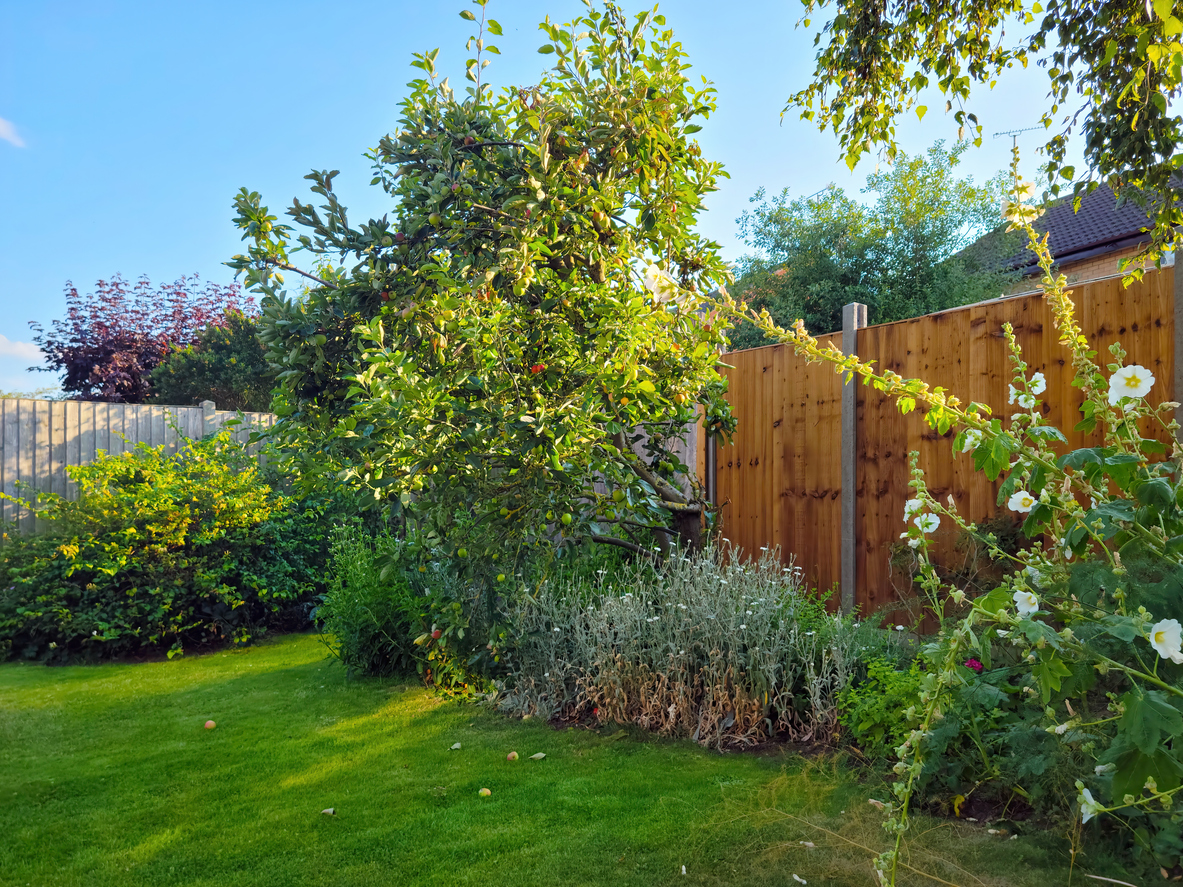

We may earn revenue from the products available on this page and participate in affiliate programs. Learn More ›
Fresh fruit is a great source of nutrients, fiber, vitamins, antioxidants, and flavor. Eating it can lead to better health. However, it can take 7 to 10 years after planting fruit trees to get to a harvestable crop—unless you choose to plant one of the fast-growing fruit trees. Grafted trees can also give you a head start on fruit yield and curb appeal, but they are more expensive than non-grafted trees.
There are many types of fruit trees. It’s important to select varieties that grow well in your USDA plant hardiness zone. Alternatively, if you have enough space and good lighting, you can grow patio fruit trees indoors.
1. Columnar Apple Tree (Malus domestica var.)
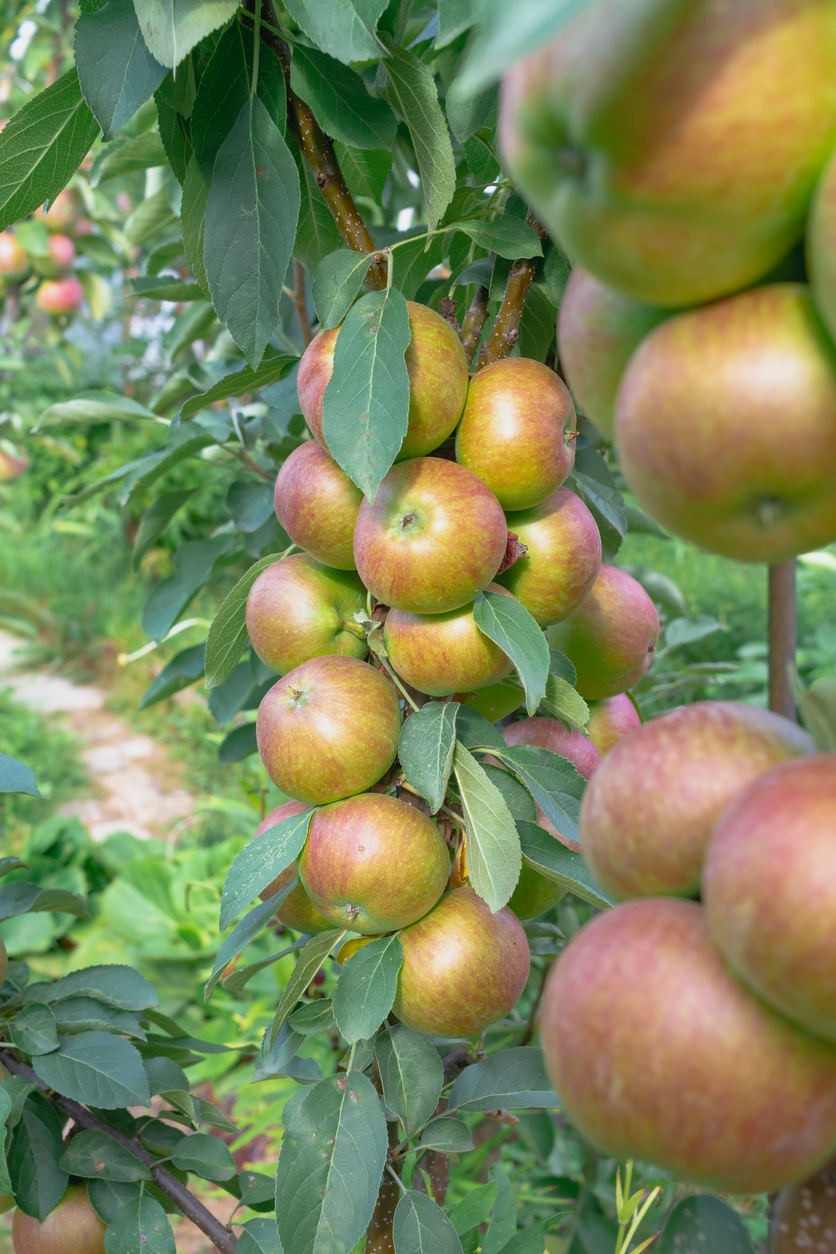
“Pear and apple trees tend to be my go-to when it comes to fast-growing fruit trees,” says Ryan Farley, CEO of LawnStarter. “Both of these trees are also pretty easy to grow in the scope of fruit-bearing trees,” he says.
The disease-resistant columnar apple tree reaches 10 feet tall and just 2 feet wide, making it ideal for containers and small lots. Although it grows at a rate similar to other apple trees, the columnar apple is a heavy producer of fruit in the first year. Apples need cold nights and warm days to set fruit. This one also needs a companion for pollination, so be sure to plant two of the trees in the same space (less than 100 feet apart).
USDA Plant Hardiness Zones: 4 through 9
Best for: Containers, small spaces
2. Santa Rosa Plum Tree (Prunus salicina ‘Santa Rosa’)
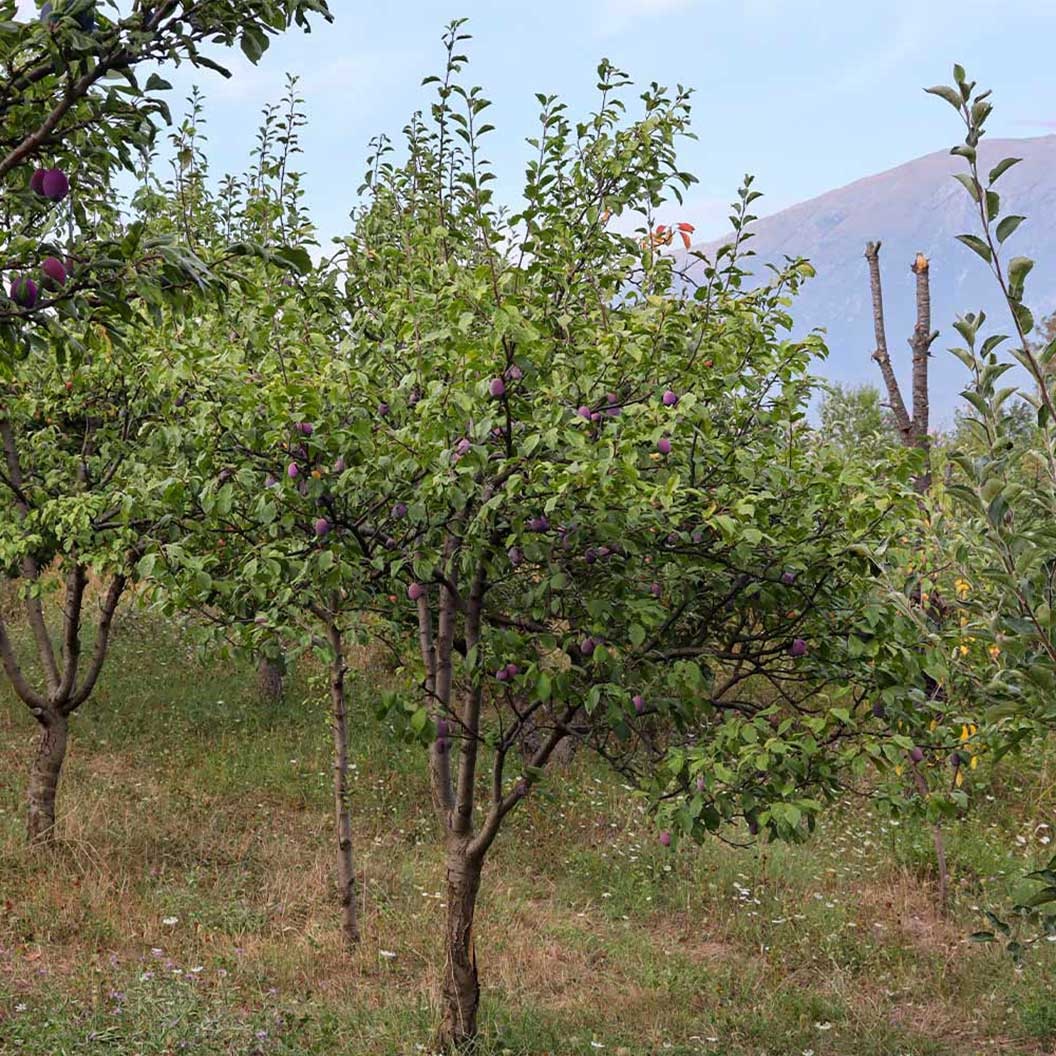
This self-pollinating plum produces some of the most delicious garden fruits available. Deep red plums have a sweet, slightly tart flavor and are good for preserving in jam, baking in quick breads, or eating right off the tree. They can also be dehydrated for delicious prunes.
This tree is a producer even before it sets fruit. With its cascade of whitish-pink spring blossoms, the Santa Rosa plum competes with any ornamental tree for the spotlight.
USDA Plant Hardiness Zones: 5 through 9
Best for: With a height of 8 to 10 feet and as a single self-pollinating tree, it’s good for small yards.
3. Asian Pear (Pyrus pyrifolia)
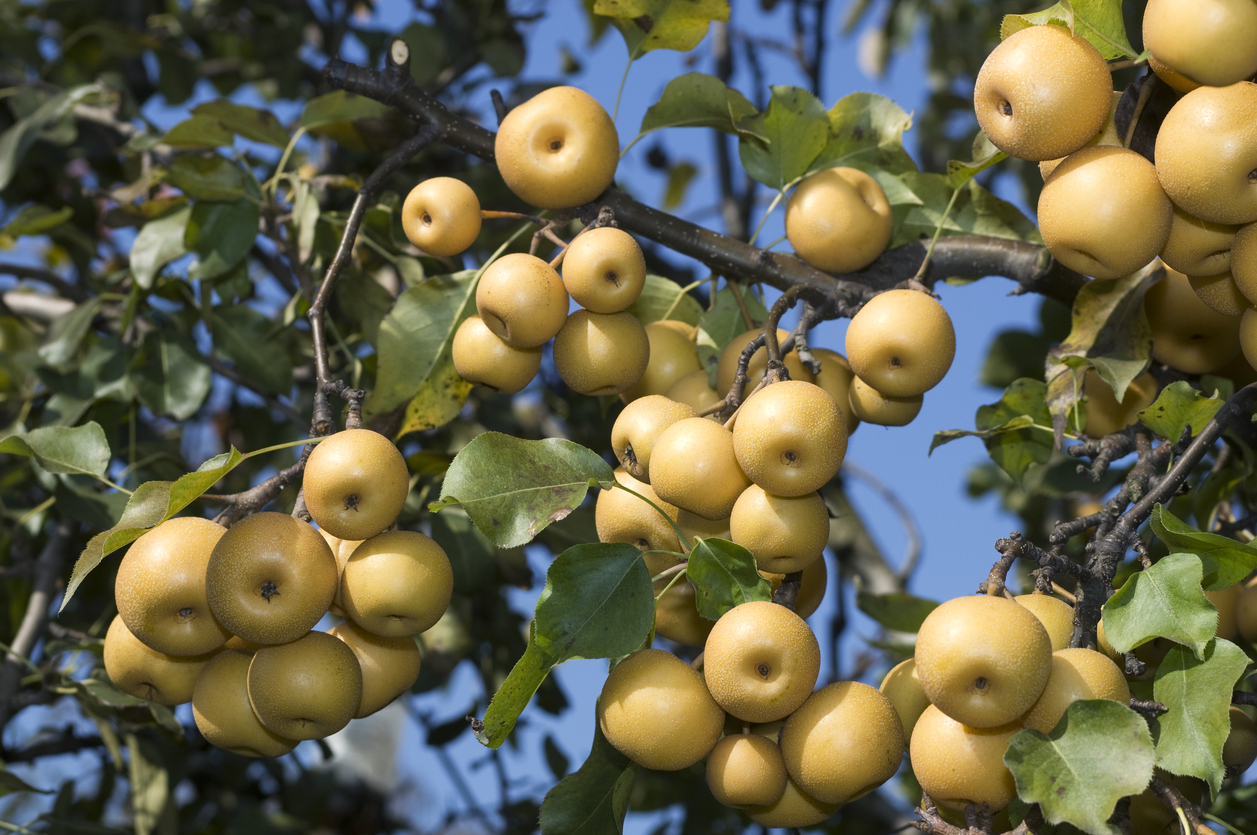
“One of the fastest-growing fruit trees is the pear tree,” says Wikilawn Austin Lawn Center President Dan Bailey. “They can grow up to 3 feet per year, giving you a relatively short time to wait for it to produce fruit.”
Shaped like an apple, with a similarly crunchy texture, the Asian pear offers a sweet, juicy pear flavor under a slightly textured skin. The fruit is sometimes referred to as “papples,” although it is not a hybrid. Fragrant white spring flowers precede the fruit.
This fall favorite grows on tall trees of 30 to 40 feet, with dwarf fruit tree versions growing 8 to 15 feet tall. Because most varieties are not self-pollinating, you’ll need enough space for at least two for fruit production. Prevent fire blight, to which they’re susceptible, by spraying copper fungicide.
USDA Plant Hardiness Zones: 5 through 9
Best for: Drought-tolerant regions
4. Ice Cream Mango Tree (Mangifera indica ‘Ice Cream’)
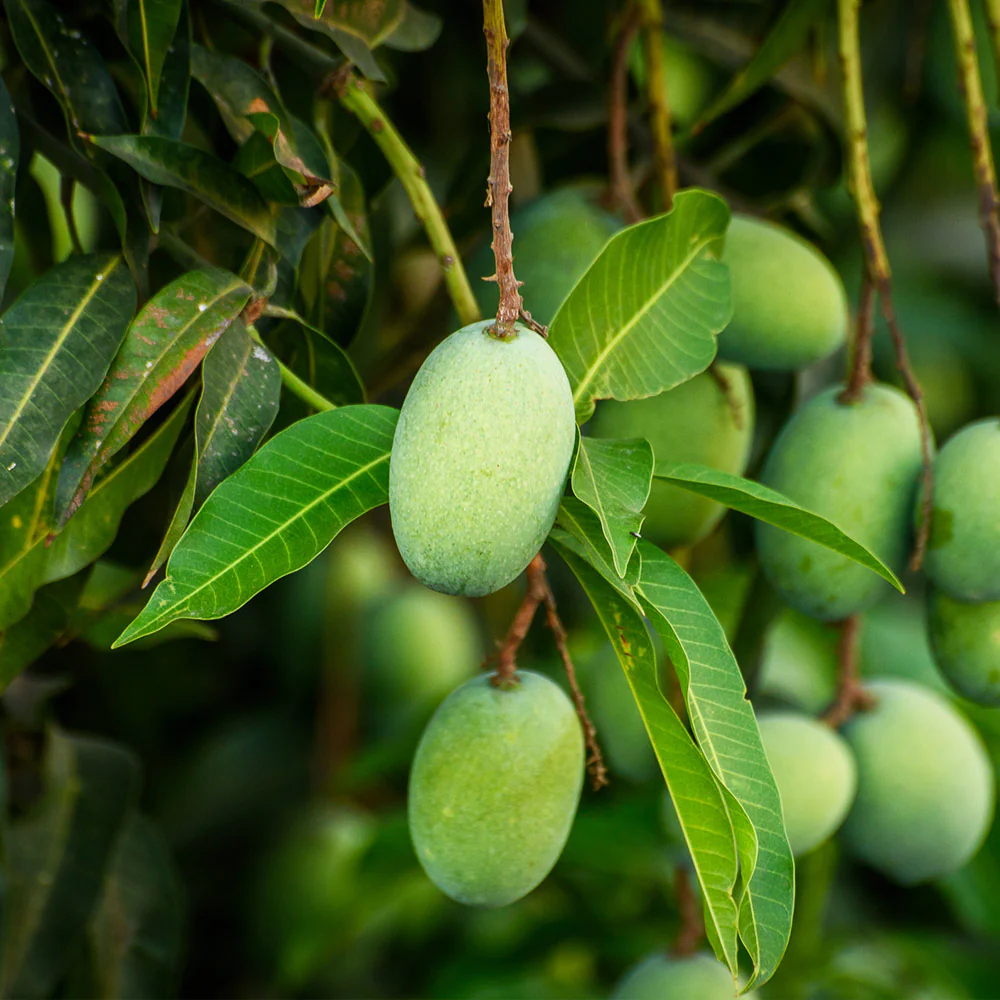
Also known as the “condo mango” for its compact size, this grafted fruit tree grows to a maximum height of 6 feet, putting delicious mangoes within reach. From its lush, evergreen, glossy leaves, long green mangoes begin to appear 2 years after planting. Drupes turn canary yellow as they ripen. When ripe, the fiberless mangoes have a very creamy texture, reminiscent of sorbet. Flavorful fruit can be eaten fresh off the tree, in preserves, or in frozen drinks.
Plant this dwarf tree where it can get warmth, lots of sun, and rich soil that drains well. It is otherwise easy to care for. Because it’s self-fertile, only one mango tree is needed to produce fruit.
USDA Plant Hardiness Zones: 10 through12
Best for: Containers
5. Sour Cherry (Prunus cerasus)
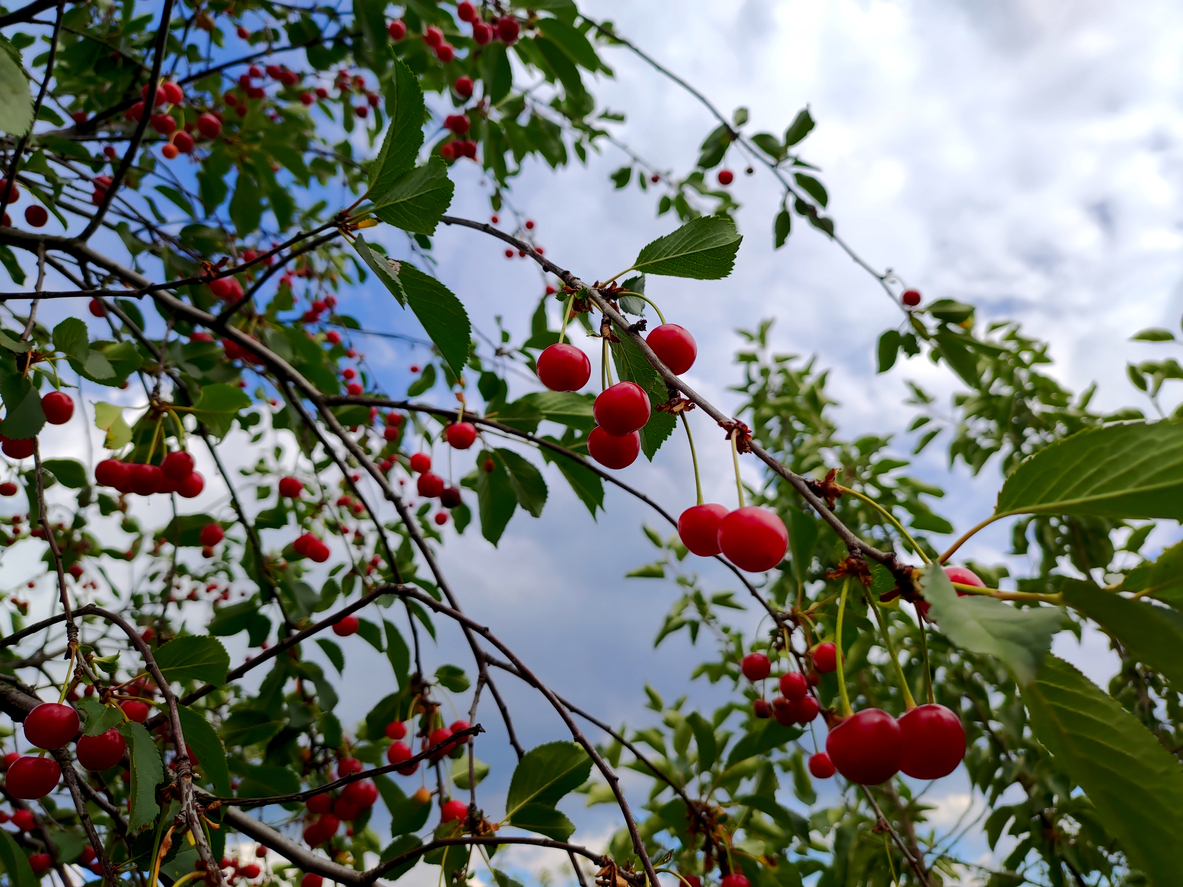
If you like tart cherries—for pies, preserves, pastries, or simply eating straight off the tree—you’ll have plenty with one of these fruit-bearing trees. A mature sour-cherry tree produces a lot of bright red drupes—all by itself. This self-pollinating tree needs no companions for cross-pollination.
A spring beauty when it is covered in pink flowers, the sour cherry comes in a standard size that grows up to 20 feet tall and a dwarf variety that reaches only 8 feet tall. The tree is a host for eastern tiger swallowtail butterfly larvae, and birds will compete with you for the ripe fruit.
USDA Plant Hardiness Zones: 3 through 8
Best For: Cooler climates, wildlife
6. Dwarf Elberta Peach Tree (Prunus persica ‘Elberta’)
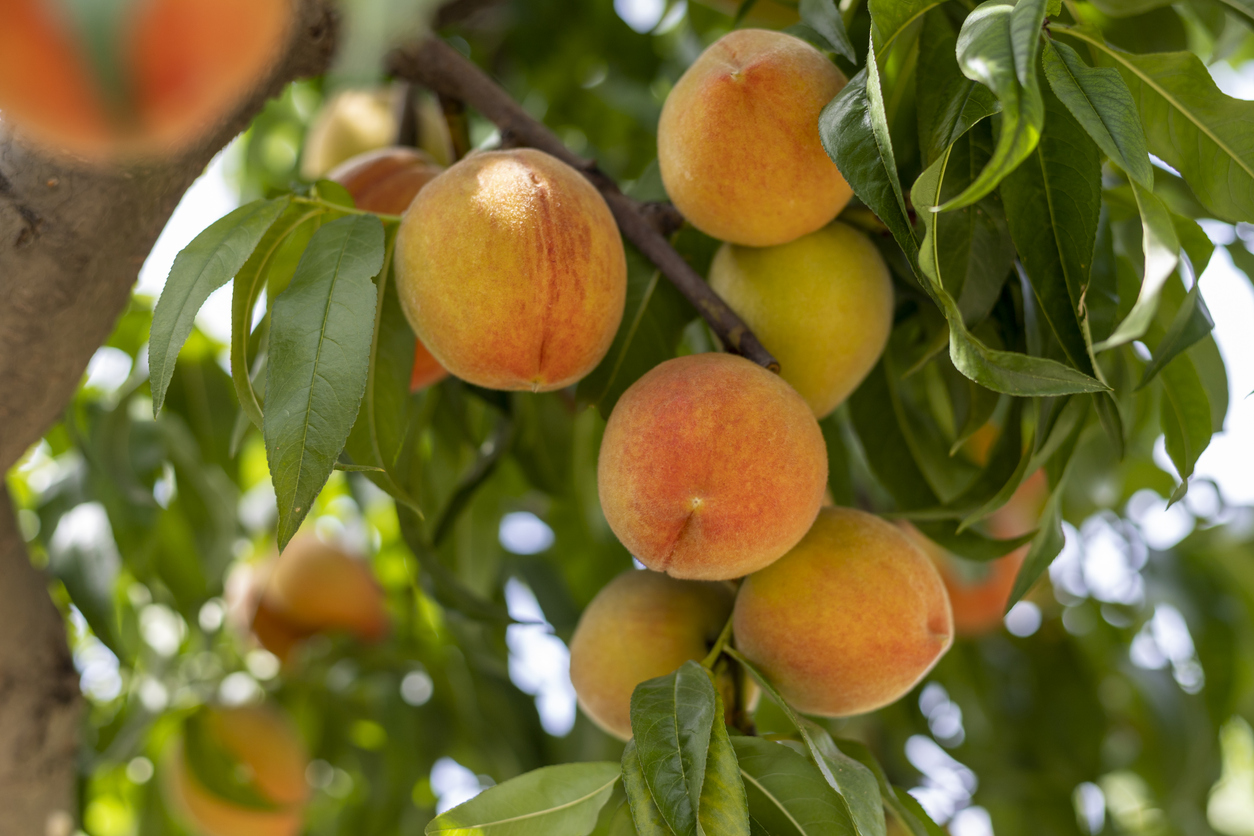
“Peach trees also grow significantly fast, producing fruit quickly,” Bailey says. Enjoy heirloom fruit known for its sweetness, large size, and juiciness right off the tree, or use it for canning and baking.
With a mature height of 8 to 10 feet, this self-pollinating peach tree can fit in yards of various sizes. Covered in pink blooms in the spring, this tree is a feast for the eyes as well as the taste buds, and it can add to curb appeal in a front landscape. Be sure to prune up to 50 percent of new growth to encourage old wood to become thicker and sturdier; fruit grows on old wood.
USDA Plant Hardiness Zones: 5 through 8
Best for: Containers, small spaces
7. Fig Tree (Ficus carica)
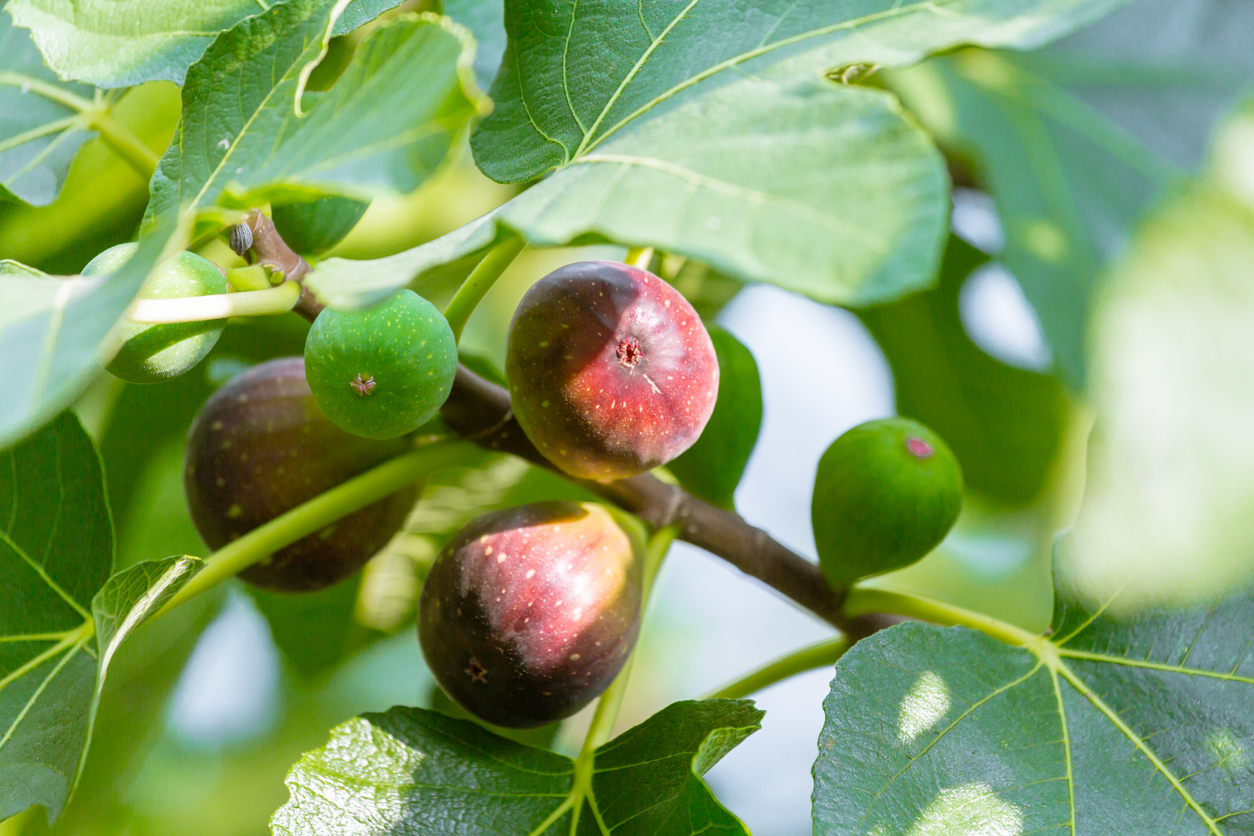
The fig is one of the fastest-growing trees, and it can produce fruit within a year. Figs are just about the easiest fruit to grow; they’re self-pollinating and don’t require fertilizing. Most figs prefer warm temperatures, but some varieties (such as the Chicago hardy fig) can withstand temperatures of negative 10 degrees Fahrenheit.
The Celeste fig is a sugar fig, best eaten raw with skin and seeds intact, but it’s also delicious when baked or grilled. As with most figs, the Celeste produces a high yield. Don’t bother looking for flowers, though, because they don’t produce them.
USDA Plant Hardiness Zones: 6 through 9 (colder for select varieties)
Best for: Drought-tolerant areas (once established)
8. Meyer Lemon Tree (Citrus x limon ‘Meyer’)
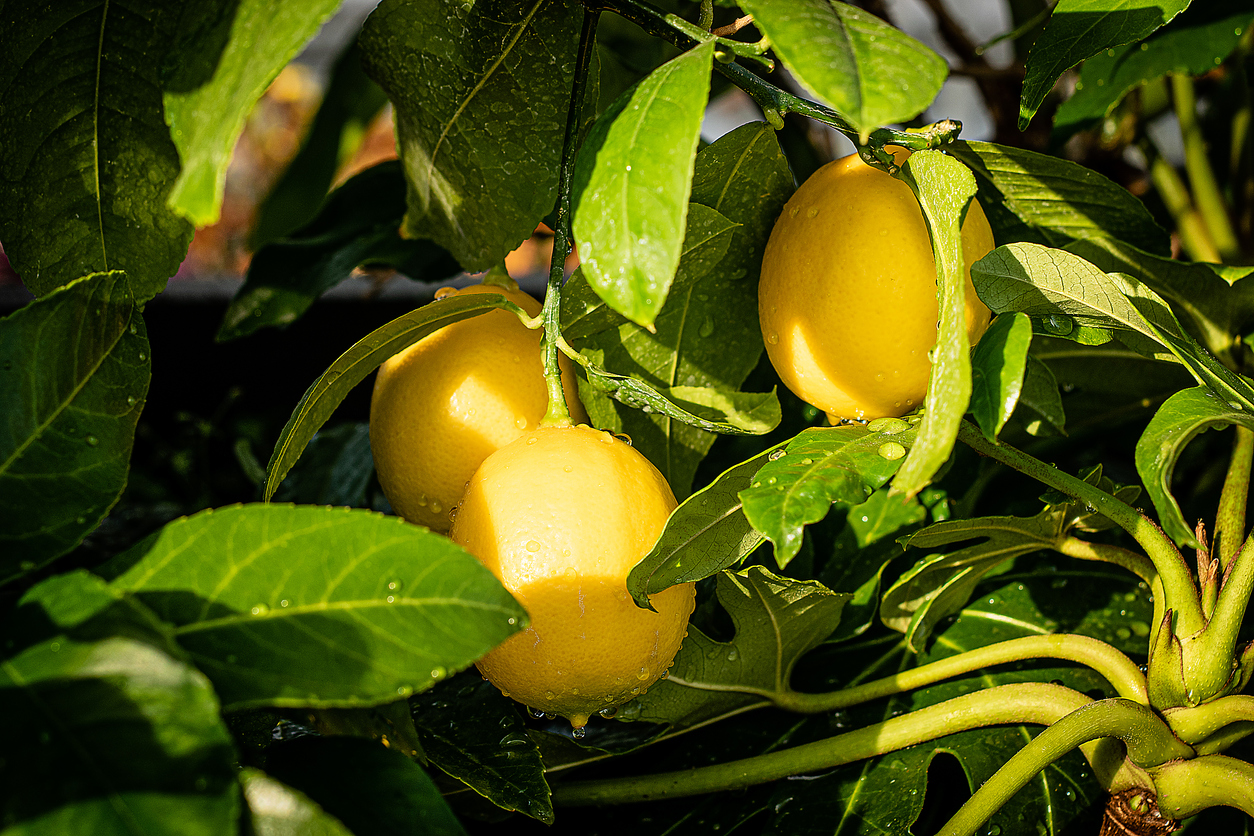
“Most citrus trees grow pretty quickly,” says Jeremy Yamaguchi, founder and CEO of Lawn Love. With a mature height of just 6 to 10 feet, a Meyer lemon tree is manageable, and dwarf varieties top out at only 4 to 6 feet, a good size to easily grow the tree indoors in a container during cold weather. “They should yield a decent amount of fruit during peak season,” says Yamaguchi. “They require a bit of TLC, including being vigilant about pruning and ensuring blooms get the nutrients they need, but they’re less fussy than other fruit trees,” he says.
This popular lemon tree is a hybrid of a lemon and a mandarin orange. It produces large fruit that is a blend of sweet and tart, and these lemons are prized by dessert makers. The leaves and flowers have a heavenly citrus scent, and cool nights will stimulate blooming on these small fruit trees.
USDA Plant Hardiness Zones: 8 through 11
Best for: Containers
9. Pawpaw Tree (Asimina triloba)
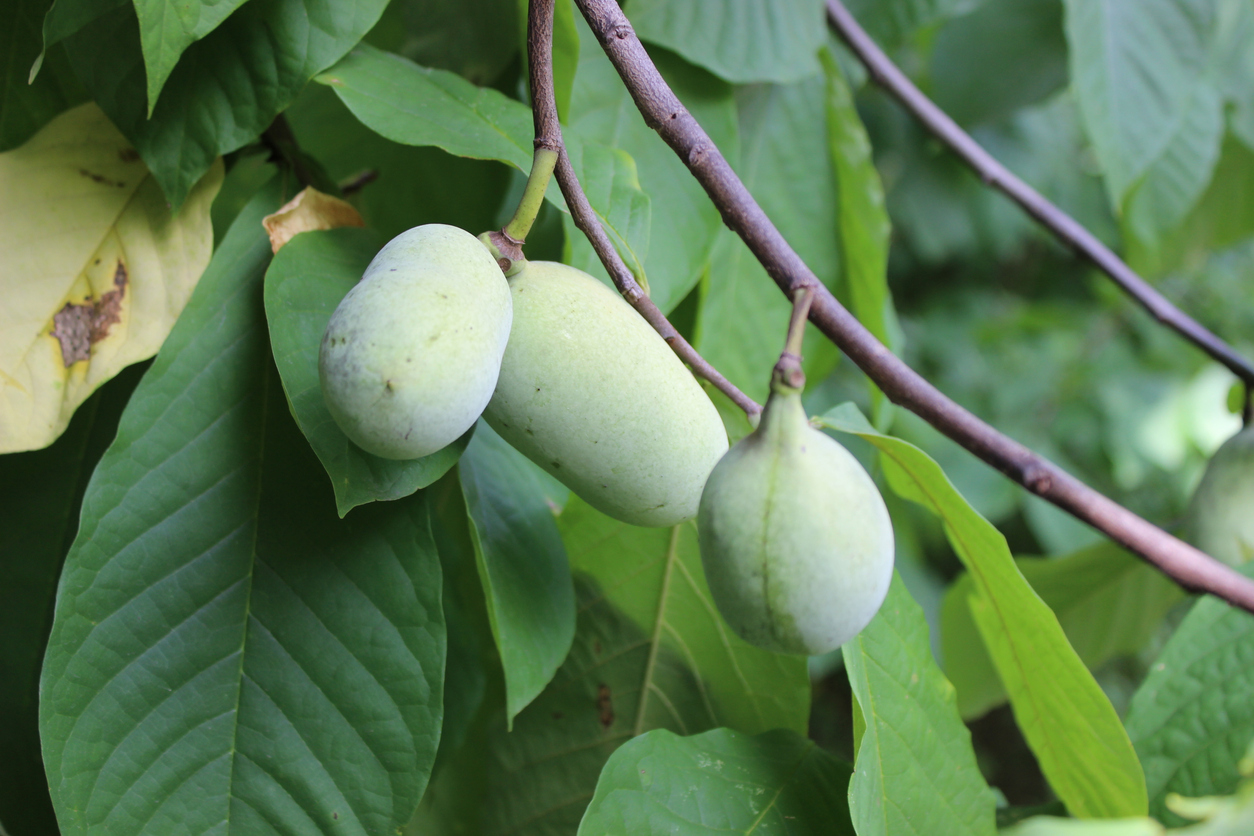
Native to eastern portions of the U.S., the pawpaw is a small, deciduous tree with among the largest yields of fruit of trees native to North America. This tree can grow to 25 feet in the sun or 2 to 12 feet in shady forests, and it produces dark, shiny, oval-shaped green leaves that get as long as 12 inches. It spreads quickly by underground runners.
With another pawpaw nearby to cross-pollinate, the trees produce fruit that looks like a greenish-yellow mango. It’s smooth, creamy, and tastes like banana custard or mango. Attractive yellow fall foliage adds interest.
USDA Plant Hardiness Zones: 5 through 9
Best for: Semi-shady areas
10. Early Golden Apricot Tree (Prunus armeniaca ‘Early Golden’)

This medium-size (15- to 20-foot-tall) tree will produce clusters of pink and white flowers in the spring, filling the air with a sweet aroma. By summer, you’ll see the drupes develop: large, smooth, golden-orange freestone fruit. They’ll begin fruiting in their second year, with substantial harvests beginning in years 3 through 5.
This self-pollinating tree is a high-maintenance choice, however. It prefers rich, well-draining soil and lots of water; it is not drought-tolerant. The tree’s blossoms are frost-sensitive, so while this tree will grow in northern zones, it may not produce fruit there depending on when spring frost occurs in a given year. Trees require regular pruning, and it’s important to note that the apricot is toxic to dogs, cats, and horses.
USDA Plant Hardiness Zones: 5 through 8
Best for: Mediterranean climates
11. Banana (Musa acuminata)
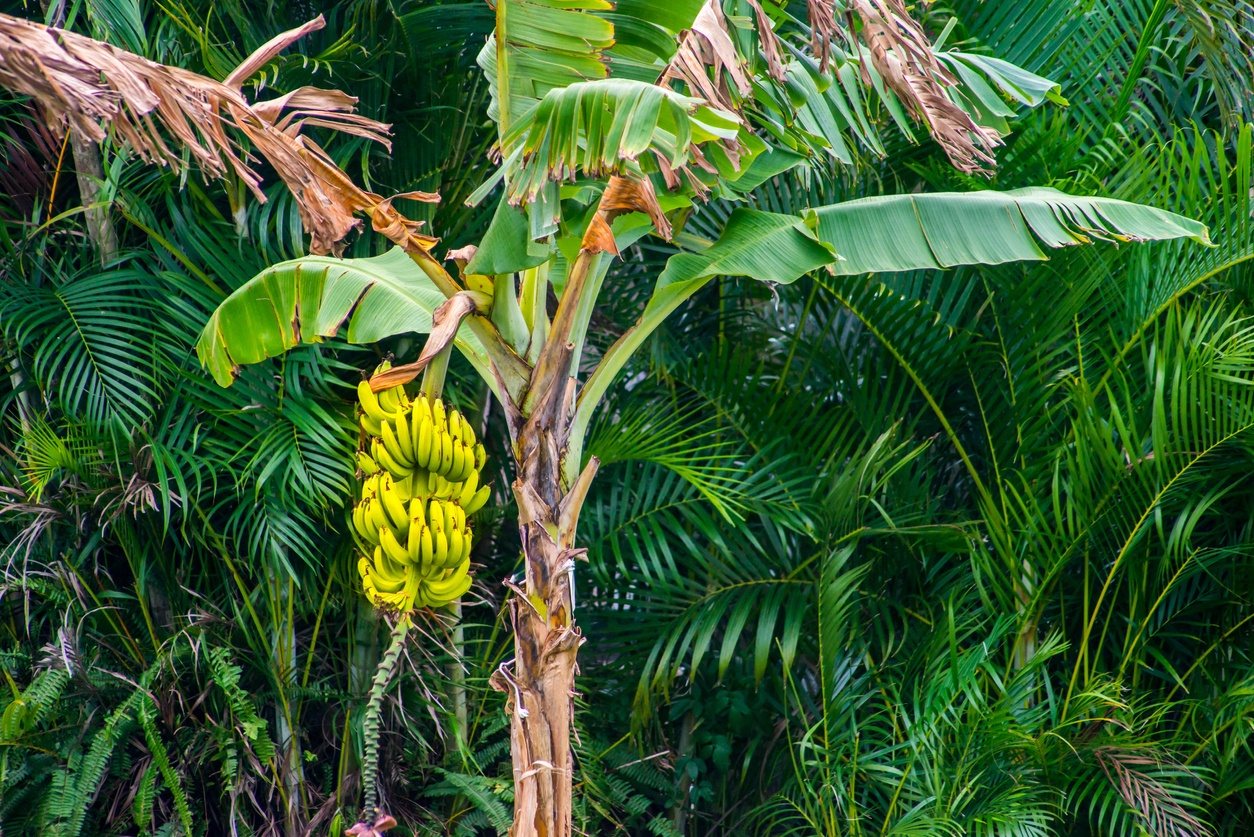
Nothing looks more tropical than banana leaves. Technically not a tree, the banana is a large herbaceous plant with a thick, fleshy stem. Most bananas prefer warm climates, but some (like M. basjoo) are hardy to Zone 5, although they are not grown for their fruit, which is inedible partly due to the short growing season.
Dwarf bananas can live in containers that can be brought inside during cold weather. When outside, keep bananas out of strong winds, which damage their leaves. It takes a lot of light, humidity, and warmth to get fruit, but delicious bananas and the showy flowers that precede them are worth it.
USDA Plant Hardiness Zones: 9 through 11 (lower for cold-hardy types that lack edible fruit)
Best for: Tropical climates
12. Dwarf Everbearing Mulberry Tree (Morus nigra)

Mulberries are small fruits that look like blackberries and taste like tart grapes. They can be eaten off the tree or made into jam, pies, and other desserts. Mulberries are a very messy fruit, however, and can stain driveways or sidewalks.
Dwarf everbearing mulberry trees are low-maintenance producers of a multitude of fruit, even in the first year, that ripens over several weeks. The tree can grow to 15 feet tall in either full sun or light shade. Since it produces volunteers and birds spread the seed, it’s not unusual to see them growing everywhere.
USDA Plant Hardiness Zones: 5 through 10
Best for: Drought-tolerant areas
13. Pomegranate Tree (Punica granatum)
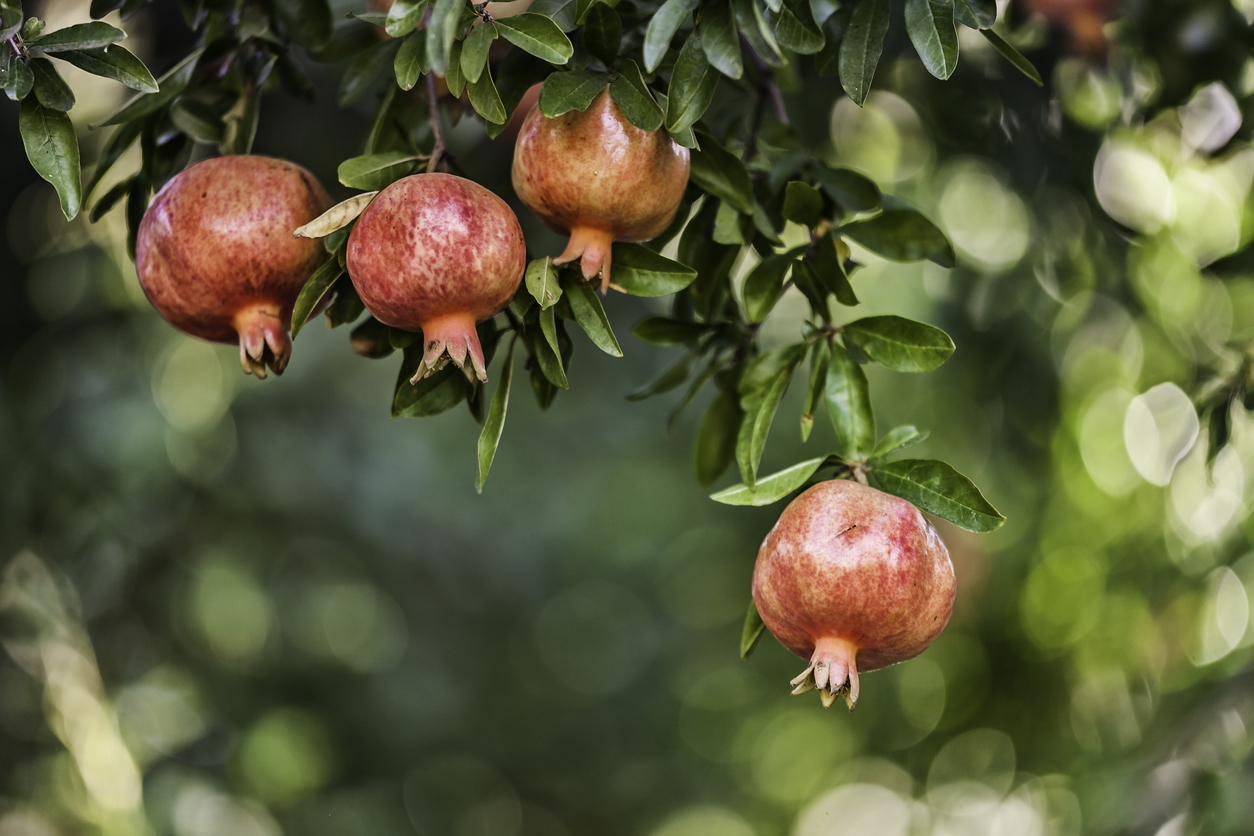
Although pomegranates grow at a moderate rate, they have a shrub rather than tree habit and reach mature heights of 10 to 12 feet. P. granatum ‘Wonderful’ is a fast-growing option with abundant fruit production. Growing up to 6 feet tall, the Kazake pomegranate produces fruit in its first year, can withstand freezing temperatures, and tolerates dry conditions and low humidity. Bright orange flowers decorate its branches in the spring.
A tough outer skin resembling an apple hides pomegranate seeds nestled inside. The seeds’ distinctive sweet-tart flavor is a favorite in Moroccan couscous and salads, and they’re delicious eaten on their own. The fruits average 2½ to 5 inches around, and the reddish-orange fruits on the dwarf Kazake tree are less than 2 inches long.
USDA Plant Hardiness Zones: 8 through 10 (colder if grown indoors)
Best for: Drought-resistant areas
14. Mexican Key Lime Tree (Citrus x aurantiifolia)

If you’re looking for evergreen fruit trees that produce exquisitely fragrant flowers and an abundance of juicy fruit, try a Mexican key lime, which is famous for the pie made from its juice and a favorite of bartenders everywhere.
This medium-size tree grows to about 8 feet tall, but it’s a suitable container plant in northern regions. When it receives lots of light, warmth, plenty of water, and fertilizer, it will reward you with dozens of small limes.
USDA Plant Hardiness Zones: 8 through 11
Best for: Containers
